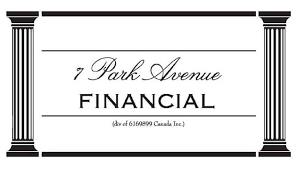|
Will Asset Backed Lending Last Forever For Your Firm? If You Want it to! It’s the Canadian Business Financing Ultimate Solution
Looking for Something Different & the Real Thing In Canadian Business Financing? This Just Might Be It
ARE YOU UNAWARE OR DISSATISFIED WITH YOUR CURRENT BUSINESS FINANCING OPTIONS?
Unlock Capital: The ABL Revolution in Canadian Business Financing
CALL NOW - DIRECT LINE - 416 319 5769 - Let's talk or arrange a meeting to discuss your needs
Or Email us with any questions on Canadian Business Financing
EMAIL - sprokop@7parkavenuefinancial.com

Learn about ABL because it goes beyond traditional bank offerings, offering a lifeline to businesses of all sizes and financial backgrounds.
Canada’s ABL Boom: Financing Your Business the Smart Way
Introduction
Asset backed lending is often the answer to our clients' main desire in Canadian business financing. That desire? Something that works! Who doesn’t want that?
The new business financing reality is that asset-backed lending, aka ‘ABL’, might be your new choice for company finance needs.
In the ever-evolving landscape of Canadian business financing, companies seek innovative and reliable solutions to fuel their growth and stabilize operations. Enter Asset Backed Lending (ABL)—a flexible financing option to secure a loan that caters to the diverse needs of businesses by leveraging their most valuable assets versus ' cash flow lending ' solutions.
As a form of secured lending, ABL has rapidly gained traction as a strategic choice for companies looking to optimize their financial strategies without compromising ownership or future earnings potential. This article aims to unfold the intricacies of ABL, guiding businesses on how to harness this powerful tool to unlock their full potential.
The Rising Popularity of ABL
Asset based line of credit facilities are becoming more popular every day. Why? It’s simply a newer lending method to Canadian businesses focusing on assets. 'Assets'. That's the keyword.
Identifying Eligible Assets
From inventory to accounts receivable, from heavy machinery to real estate, and even extending to intellectual property and tax credits—ABL embraces a wide array of assets to secure the financing that businesses desperately need.
By monetizing these assets, companies can maintain a steady cash flow, enabling them to make strategic investments, cover operational costs, and pursue growth opportunities without delay.
While ABL typically involves tangible assets like inventory and real estate, it's worth considering the untapped potential of intellectual property (IP). Many businesses possess valuable patents, trademarks, and copyrights that can be leveraged for financing.
A creative take on ABL involves monetizing these intangible assets, providing a unique avenue for companies to access capital without selling or diluting ownership of their IP.
Tax Credits as a Finance Asset
Among other forms of financing assets, such as equipment financing, is another new common category: tax credits, such as SR ED (SR&ED) tax credits. Tax credits are in effect, accounts receivables, money owing to you from the government that is in the form of a non-repayable type grant.
So, monetizing that asset as soon as possible allows you to employ cash more efficiently in your business. So don't discount your ability to finance that asset, i.e. your R&D capital refund. It beats waiting and accelerates cash flow.
Beyond Basic Bank Offerings
Clients typically imagine inventory and receivables as the only items they could margin for liquidity with their bank. The reality is that even inventory financing is becoming more difficult in the chartered bank environment, indeed for start-up, smaller, and medium-sized firms. That, therefore, is the main difference in asset-backed lending and a working capital facility; in its simplest form, it's simply the margining of all those other assets to capture maximum liquidity. Repeat - All your assets!
Who Utilizes Asset Backed Lending?
The Profile of ABL Users
So, who is using these types of cash flow facilities, and why are they a very solid alternative to what is termed 'traditional' bank financing? (We're not so sure these days that 'traditional' bank financing is as available as it used to be - what do you think?!)
ABL as an Alternative Financing Solution
The truth is that this type of Canadian business financing is an alternative to bank financing; it's natural, it's available, and it allows you not to have to consider more unpalatable options such as raising new equity and diluting your ownership. Factoring is a subset of ABL and provides an accounts receivable financing stand-alone solution for a/r, viewed as highly liquid collateral.
When to Consider ABL
We are all for secured bank lending... if your firm can qualify for all the lending it needs. But if you have had financial challenges, then consider asset backed lending for certain assets as a solid option. What are some of those ' challenges' we speak of that might not allow you to get Canadian chartered bank financing... its issues such as a temporary loss, a turnaround, new ownership, balance sheet ratios and covenants that might not work for the bank, etc.
Focus on Assets, Not Problems
Asset based finance doesn’t focus on those issues - yes, they are discussed, but it always comes back to ' the company's assets ' - and if you have them, you can margin them daily for working capital and cash flow.
Understanding the Trade-offs of ABL
The Costs of Asset Based Lending
Asset-backed lending (ABL) often comes with higher costs than traditional bank financing. This is mainly due to the nature of ABL, which focuses more on the value of a company's physical assets rather than its creditworthiness or cash flo
The increased costs manifest in higher interest rates or fees as lenders take on different risks by providing capital against assets that fluctuate in value. Despite these potentially higher costs, many companies opt for ABL because it can offer greater flexibility and more immediate access to capital. Particularly for companies that may not qualify for traditional bank loans due to a lack of credit
history or variable cash flows, ABL allows them to leverage their assets to support growth, manage cash flow cycles, or navigate through periods of financial stress. The willingness to incur higher costs through ABL can be a strategic choice for businesses that value the ability to quickly capitalize on market opportunities or require a tailored financing solution that aligns with their operational needs.
Reporting Requirements
It also requires more reporting on an ongoing basis. However, most business owners we talk to will gladly pay more finance charges and are okay with reporting if they have all the cash flow they need to grow and profit in today's competitive environment. You can also expect a bit more due diligence on your overall asset quality when you set up the facility.
Who Can Benefit from ABL?
Whether you are a start-up struggling to secure traditional financing, a medium-sized enterprise looking to expand, or an established firm facing temporary financial hurdles, ABL offers a tailor-made solution that revolves around your assets. This alternative financing model has become a cornerstone for companies at a crossroads, needing capital but unwilling to dilute their equity or suffocate under unforgiving bank covenants.
Future Earnings Potential: Traditional ABL primarily focuses on current assets, but forward-thinking businesses can explore financing based on future earnings potential. By leveraging projected cash flows and revenue streams, companies can access capital to invest in growth initiatives, research and development, or market expansion. This unconventional take shifts the emphasis from historical performance to future possibilities, allowing businesses to access funds based on their growth trajectory.
Conclusion: The Emerging Power of ABL
The reality of business financing is shifting. Traditional bank loans, with their stringent requirements and lengthy processes, are no longer the sole go-to for companies needing capital. ABL emerges as a beacon of hope, particularly for those who have substantial assets but require more liquidity to push their business forward. This method of lending focused squarely on 'assets', offers a lifeline to companies that may not have previously qualified under conventional lending criteria.
With an emphasis on assets, ABL allows companies to maintain a daily margin for working capital and cash flow—ensuring the financial agility needed to thrive in today's competitive marketplace. However, like any financial decision, opting for ABL requires a thorough understanding of its cost implications and reporting requirements.
Bottom line? An asset backed line of credit facility is a new and emerging working capital financing that provides your firm with all the liquidity to grow.
Call 7 Park Avenue Financial, a credible, experienced and trusted Canadian business financing advisor to determine if this working capital and credit facility benefits your firm.
FAQ
What exactly is asset backed lending?
Asset-backed lending (ABL) is a type of financing where a loan is provided to a company based on the value of its assets, such as inventory, receivables, and equipment.
How does ABL differ from traditional bank loans?
Unlike traditional loans and unsecured loans from banks that focus on credit history profitability and a company's cash flow, ABL concentrates on the value of a company’s physical assets, offering more flexibility and, often, greater access to capital. Commercial real estate can also be funded within a revolving facility or separately under a favourable loan to value ratio. Typically, current assets and liquid assets are the majority part of a credit facility.
Can startups or small businesses benefit from ABL?
Absolutely. ABL asset based financing solutions can be particularly advantageous for startups and smaller businesses with assets that might not yet have a long credit history or steady profitability.
What are the typical costs associated with ABL?
While ABL can be more costly than traditional loans due to higher interest rates, many businesses find the trade-off for quick access to capital and flexible terms to be worth the expense.
Is the reporting process for ABL rigorous?
Yes, ABL usually requires detailed reporting on your assets, but this ensures that financing is aligned with your current asset base, providing ongoing liquidity for your business.
Can ABL be used for emergency funding needs?
Yes, ABL secured loans can be structured quickly when the business owner has decided to choose asset based lending, making it a viable option for businesses facing sudden financial demands and with a pledged asset capability.
Are there any industry restrictions for ABL in Canada?
ABL is versatile and can be used across various industries; however, the suitability of assets for collateral may vary by sector. Asset-backed lending (ABL) is a versatile financing solution that can be tailored to meet the unique needs of various industries, including healthcare, technology, and manufacturing. There is no real maximum loan amount in asset based financing solutions.
Unlike an unsecured loan, Asset-backed lending offers tailored solutions to address specific challenges and capitalize on opportunities. By leveraging their industry-specific assets, businesses can access the capital needed to grow, innovate, and navigate the unique financial landscape of their sector.
What happens if the value of the collateralized assets decreases?
If asset values fall, you may need to provide additional collateral or pay down part of the loan to maintain the borrowing base. If a borrower defaults, lenders will often focus on a restructured facility.
Can intellectual property be used as an asset for ABL?
Yes, in some cases, intellectual property can serve as collateral for an asset based loan via asset based lenders. However, it's evaluated case-by-case due to its unique valuation challenges.
Is it possible to combine ABL with other forms of financing?
Yes, businesses can use ABL asset based loans with multiple forms of business financing methods to create a comprehensive financial strategy.

' Canadian Business Financing With The Intelligent Use Of Experience '
STAN PROKOP
7 Park Avenue Financial/Copyright/2024

Stan Prokop is the founder of 7 Park Avenue Financial and a recognized expert on Canadian Business Financing. Since 2004 Stan has helped hundreds of small, medium and large organizations achieve the financing they need to survive and grow. He has decades of credit and lending experience working for firms such as Hewlett Packard / Cable & Wireless / Ashland Oil
|